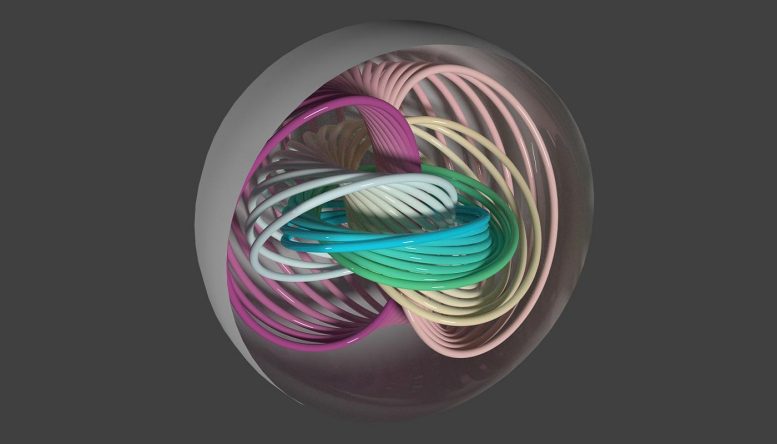
Image depicts some of the polarization lines within a ferroelectric nanoparticle. The lines intertwine into a Hopfion topological structure. Credit: Yuri Tikhonov, University of Picardie and Russia’s Southern Federal University, and Anna Razumnaya, Southern Federal University
Novel Insight Reveals Topological Tangle in Unexpected Corner of the Universe
Scientists find a unique knotted structure — one that repeats itself throughout nature — in a ferroelectric nanoparticle, a material with promising applications in microelectronics and computing.
Just as a literature buff might explore a novel for recurring themes, physicists and mathematicians search for repeating structures present throughout nature.
For example, a certain geometrical structure of knots, which scientists call a Hopfion, manifests itself in unexpected corners of the universe, ranging from particle physics, to biology, to cosmology. Like the Fibonacci spiral and the golden ratio, the Hopfion pattern unites different scientific fields, and deeper understanding of its structure and influence will help scientists to develop transformative technologies.
“The polarization lines intertwining themselves into a Hopfion structure may give rise to the material’s useful electronic properties, opening new routes for the design of ferroelectric-based energy storage devices and information systems.” — Valerii Vinokur, Argonne senior scientist and Distinguished Fellow
In a recent theoretical study, scientists from the U.S. Department of Energy’s (DOE) Argonne National Laboratory, in collaboration with the University of Picardie in France and the Southern Federal University in Russia, discovered the presence of the Hopfion structure in nano-sized particles of ferroelectrics — materials with promising applications in microelectronics and computing.
The identification of the Hopfion structure in the nanoparticles contributes to a striking pattern in the architecture of nature across different scales, and the new insight could inform models of ferroelectric materials for technological development.
Ferroelectric materials have the unique ability to flip the direction of their internal electric polarization — the slight, relative shift of positive and negative charge in opposite directions — when influenced by electric fields. Ferroelectrics can even expand or contract in the presence of an electric field, making them useful for technologies where energy is converted between mechanical and electrical.
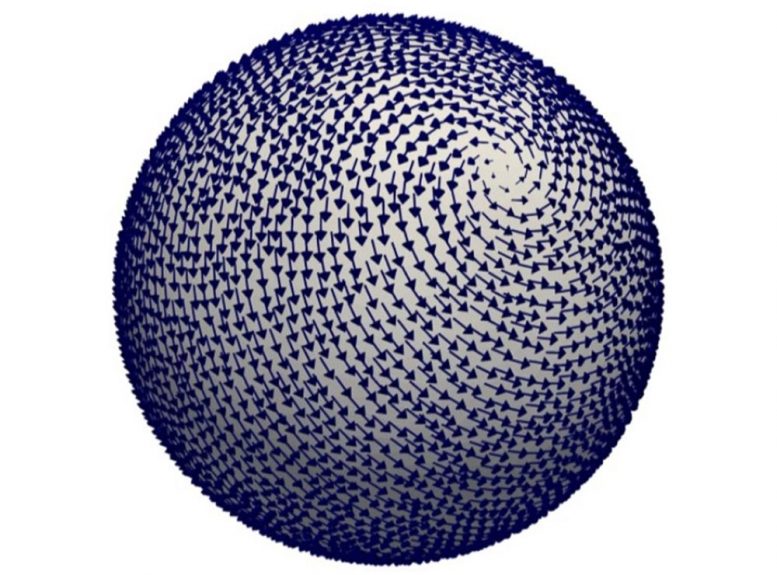
Tracing paths along the depicted polarization arrows — like tracing paths of hairs in the swirl on the back of a head — produces the lines in the simulations. Credit: Yuri Tikhonov, University of Picardie and Russia’s Southern Federal University, and Anna Razumnaya, Southern Federal University
In this study, the scientists harnessed fundamental topological concepts with novel computer simulations to investigate the small-scale behavior of ferroelectric nanoparticles. They discovered that the polarization of the nanoparticles takes on the knotted Hopfion structure present in seemingly disparate realms of the universe.
“The polarization lines intertwining themselves into a Hopfion structure may give rise to the material’s useful electronic properties, opening new routes for the design of ferroelectric-based energy storage devices and information systems,” said Valerii Vinokur, senior scientist and Distinguished Fellow in Argonne’s Materials Science division. “The discovery also highlights a repeated tendency in many areas of science.”
What (and where) in the world are Hopfions?
Topology, a subfield of mathematics, is the study of geometric structures and their properties. A Hopfion topological structure, first proposed by Austrian mathematician Heinz Hopf in 1931, emerges in a wide range of physical constructs but is rarely explored in mainstream science. One of its defining characteristics is that any two lines within the Hopfion structure must be linked, constituting knots ranging in complexity from a few interconnected rings to a mathematical rat’s nest.
“The Hopfion is a very abstract mathematical concept,” said Vinokur, “but the structure shows up in hydrodynamics, electrodynamics and even in the packing of DNA and RNA molecules in biological systems and viruses.”
In hydrodynamics, the Hopfion appears in the trajectories of liquid particles flowing inside of a sphere. With friction neglected, the paths of the incompressible liquid particles are intertwined and connected. Cosmological theories also reflect Hopfion patterns. Some hypotheses suggest that the paths of every particle in the universe interweave themselves in the same Hopfion manner as the liquid particles in a sphere.
According to the current study, the polarization structure in a spherical ferroelectric nanoparticle takes on this same knotted swirl.
Simulating the swirl
The scientists created a computational approach that tamed polarization lines and enabled them to recognize the emerging Hopfion structures in a ferroelectric nanoparticle. The simulations, performed by researcher Yuri Tikhonov from the Southern Federal University and the University of Picardie, modeled the polarization within nanoparticles between 50 to 100 nanometers in diameter, a realistic size for ferroelectric nanoparticles in technological applications.
“When we visualized the polarization, we saw the Hopfion structure emerge,” said Igor Luk’yanchuck, a scientist from the University of Picardie. “We thought, wow, there is a whole world inside of these nanoparticles.”
Simulation reveals the Hopfion structure of polarization lines within a ferroelectric nanoparticle. (Video by Yuri Tikhonov, University of Picardie and Russia’s Southern Federal University, and Anna Razumnaya, Southern Federal University.)
The polarization lines revealed by the simulation represent the directions of displacements between charges within atoms as they vary around the nanoparticle in a way that maximizes energy efficiency. Because the nanoparticle is confined to a sphere, the lines travel around it indefinitely, never terminating on — or escaping from — the surface. This behavior is parallel to the flow of an ideal fluid about a closed, spherical container.
The link between liquid flow and the electrodynamics displayed in these nanoparticles bolster a long-theorized parallelism. “When Maxwell developed his famous equations to describe the behavior of electromagnetic waves, he used the analogy between hydrodynamics and electrodynamics,” said Vinokur. “Scientists have since hinted at this relationship, but we demonstrated that there is a real, quantifiable connection between these concepts that is characterized by the Hopfion structure.”
The study’s findings establish the fundamental importance of Hopfions to the electromagnetic behavior of ferroelectric nanoparticles. The new insight could result in increased control of the advanced functionalities of these materials — such as their supercapacitance — for technological applications.
“Scientists often view properties of ferroelectrics as separate concepts that are highly dependent on chemical composition and treatment,” said Luk’yanchuck, “but this discovery may help describe many of these phenomena in a unifying, general way.”
Another possible technological advantage of these small-scale topological structures is in memory for advanced computing. Scientists are exploring the potential for ferroelectric materials for computational systems. Traditionally, the flip-able polarization of the materials could enable them to store information in two separate states, generally referred to as 0 and 1. However, microelectronics made of ferroelectric nanoparticles might be able to leverage their Hopfion-shaped polarization to store information in more complex ways.
“Within one nanoparticle, you may be able to write much more information because of these topological phenomena,” said Luk’yanchuck. “Our theoretical discovery could be a groundbreaking step in the development of future neuromorphic computers that store information more organically, like the synapses in our brains.”
Future plans
To perform deeper studies into the topological phenomena within ferroelectrics, the scientists plan to leverage Argonne’s supercomputing capabilities. The scientists also plan to test the theoretical presence of Hopfions in ferroelectric nanoparticles using Argonne’s Advanced Photon Source (APS), a DOE Office of Science User Facility.
“We view these results as a first step,” said Vinokur. “Our intention is to study the electromagnetic behavior of these particles while considering the existence of Hopfions, as well as to confirm and explore its implications. For such small particles, this work can only be performed using a synchrotron, so we are fortunate to be able to use Argonne’s APS.”
An article based on the study, “Hopfions emerge in ferroelectrics,” appeared online in Nature Communications on May 15. Authors of the study also include Anna Razumnaya of the Southern Federal University in Russia. The research at Argonne was funded by DOE’s Office of Science, Office of Basic Energy Sciences. Research at the collaborating institutions was funded by the European Commission’s HORIZON 2020 initiative.
Reference: “Hopfions emerge in ferroelectrics” by I. Luk’yanchuk, Y. Tikhonov, A. Razumnaya and V. M. Vinokur, 15 May 2020, Nature Communications.
DOI: 10.1038/s41467-020-16258-w

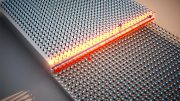
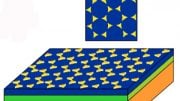
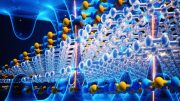
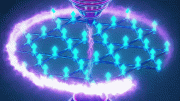
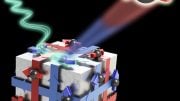
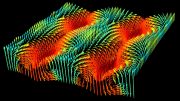
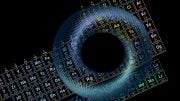

Two Interesting Bits of News shared recently could help in speeding up the Commercialization of quantum Computing.
1. There was an algorithm for finding bjects in a Ocean.
2. Quantum Q-Bits last for 2 Seconds. n Quantum terms this is almost like eternity.
Exploiting these two in Combination with the Russian Scientists Findings can lead to interesting possibilities.
Spacetime folding for intergalactic incusion
Quite revealing.
Looks almost like magnetism
The mythical Gordian Knot, if you can untie it, you are the King.
Ummm
Yeah…
Jesus is Lord, of everything, in case anyone forgot…